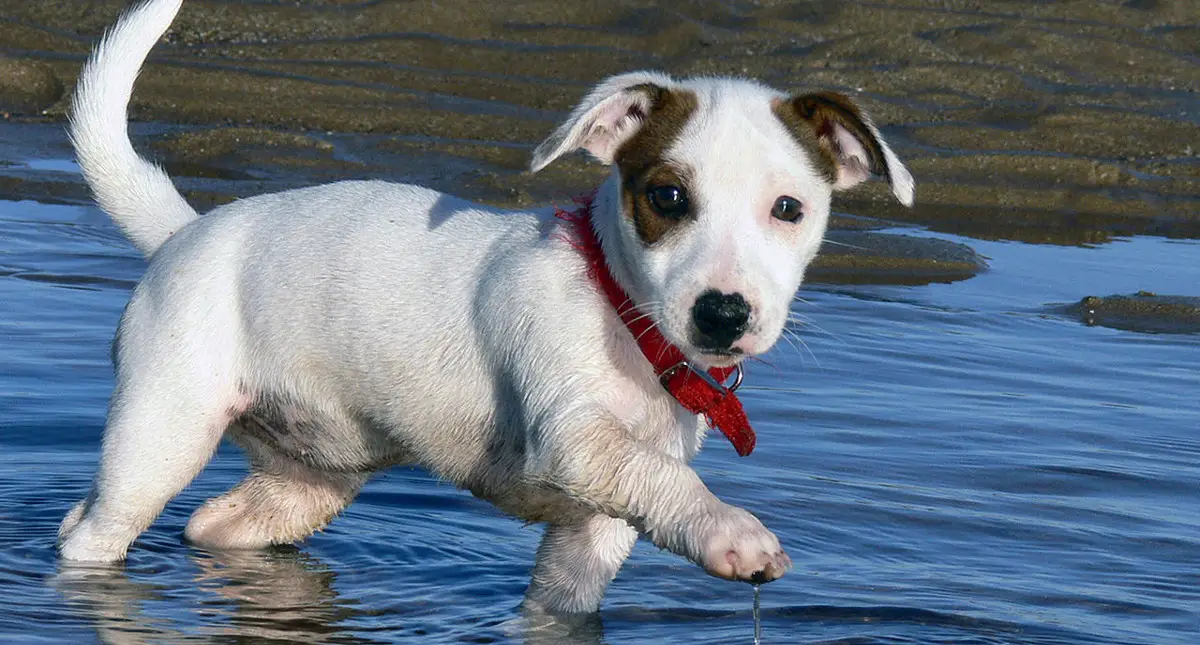Table of Contents
*This post may contain affiliate links. As an Amazon Associate we earn from qualifying purchases.
Some dogs love bath time. Others, not so much. Depending on your dog, you may find yourself looking forward to bath time or dreading it.
So, how often should you bathe your dog?
Well, if your dog is healthy and spends most of their time indoors, experts say you can get away with a few times a year. Most dogs groom themselves, and bathing them too often can cause dry skin, damage to the hair, and can increase the risk of fungal and bacterial infections.

But if your dog spends a lot of time outdoors, or isn’t able to groom themselves, then you may need to bathe them more often. On top of that, more frequent bathing is a common way of managing a number of skin conditions.
In any case, making your own dog shampoos can help you to save money, as well as to have ultimate control over the ingredients and substances your dog is exposed to.
And it can be fun, too.
Basic Ingredients
Every shampoo needs to perform the same core tasks. Here are the ingredients that will get the job done.
The base
The first ingredient, and the one you’ll use the most
Cleansing ingredients
Dog shampoo recipes will also contain a cleansing ingredient. These include gentle soaps, such as castile soap, which is an olive oil based soap that originated in Spain; dishwashing liquid, and baby shampoo. You might also see recipes with vinegar or lemon juice as cleansing ingredients.

Special ingredients
You might also add ingredients that perform a special function. These include:
- oatmeal for itchy skin
- rosemary water for a shiny coat
- vinegar, lemon juice, or geranium oil to repel fleas and ticks
Storage
You’ll also, of course, want jars or bottles in which to store your shampoo.
Recipe #1: Basic Shampoo
Here is a recipe for a gentle, general-use shampoo that will get your dog clean…naturally.

You will need:
- Half a cup of unscented liquid castile soap
One quarter cup of apple cider vinegar (white vinegar works also)- One tablespoon of olive oil
- Two tablespoons of water
Combine all ingredients in a jar and shake. When you go to shampoo your dog, wet them down with warm water first, then work the shampoo into their coat. Be very careful to avoid their eyes, as the vinegar will sting. Finally, rinse out the shampoo, and dry your dog with a
A bit about castile soap

You can find castile soap at most health food stores. It comes in liquid and bar form. The liquid form is easier to use in a shampoo, but you can also finely grate an equal amount of
A bit about your vinegar

When it comes to vinegar, many prefer to use a natural apple cider vinegar with “the mother.” The Mother is a culture of beneficial bacteria that looks like a cloudy clump at the bottom of the bottle. However, refined ACV and white vinegar also have powerful cleaning
Vinegar also has the benefit of repelling fleas and ticks.
Recipe #2: a Shampoo for Sensitive Skin
Colloidal oatmeal has long been prescribed to soothe itchy skin in both humans and pets. “Colloidal” simply means “finely-ground,” and all you need to make it at home is a blender or food processor. If your pup has hot spots or suffers from itchy skin conditions, this shampoo can temporarily soothe it. If your dog has an ongoing skin condition, it goes without saying that a trip to the vet is in order.

You will need:
- One cup of oatmeal
- Half a cup of baking soda
- Four cups of warm water
You should make this shampoo when you’re ready to bathe your pup. Unlike the previous recipe, you can’t keep it sitting around until you’re ready to use it, as wet oatmeal turns to cement if left too long.
First, grind the oatmeal into flour. Add the baking soda. Now, add the water, and mix.
Wet your dog down. Rub the mixture into your dog’s coat, gently massaging the skin. If you can, let it sit on your dog’s coat for five minutes, then rinse and dry per usual.
Recipe #3: a Flea and Tick Shampoo
It’s a well-kept secret that common dishwashing liquid, which is gentle, and non-toxic, effectively kills fleas and ticks. How does it do this? It breaks down their exoskeletons. And it doesn’t take a lot.
You can, of course, wet your dog down, apply the dishwashing liquid directly, then lather and rinse. You can also make a diluted solution if you think the soap may irritate your dog’s skin.
Please note, we’re talking about hand-washing liquid. Never use dishwasher detergent or laundry soap on your pup!

Also, please note that although dishwashing liquid kills fleas and ticks, it doesn’t keep them from coming back. So you will have to repeat the treatment, and it’s always a good idea to treat your home and your dog’s bedding as well.
If you want to keep new fleas and ticks at bay, you can apply a half-and-half solution of vinegar and water, or of lemon juice and water after giving your dog this natural flea bath.
Recipe #4: Dry shampoo
There may be times when you don’t want the fuss and bother of a wet bath. Any elephant can tell you that a dry bath can get you just as clean. It’s also good for removing odors. Here’s how to make a dry shampoo.

You’ll need:
- One cup of cornstarch or flour (this is the base)
- One-half cup of baking soda (this deodorizes)
Don’t use this on a dog with broken skin or cuts. It may hurt! Also, make sure not to get this in your dog’s eyes. Ouch!
First, mix the ingredients together. Then, brush your dog to remove dirt, tangles, and so on. Now, apply the powder to your dog’s coat, and work in, just as you would any other powder. It’s good if you can let this sit on your dog’s coat for five to ten minutes. Finally, brush it out.
The flour or cornstarch will absorb oils and cling to dirt. The baking soda will deodorize.
You may end up with a bit of a mess, but at least it won’t be a wet mess!
Let’s Get Clean!

It’s cheap, quick, and easy to make natural dog shampoos, and you can use ingredients you probably already have in your cupboards.
Do you have a favorite recipe?
Featured Image: CC SA 3.0 by Steve 65, via Wikimedia Commons

